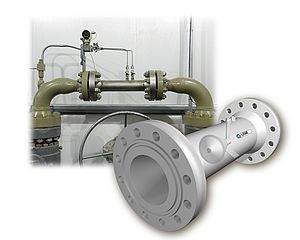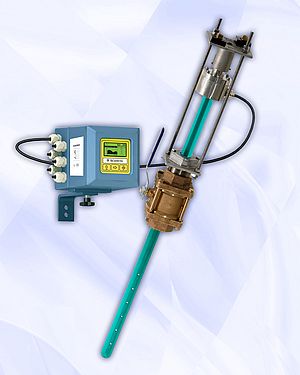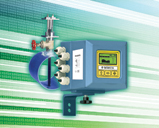Featuring a differential pressure technology McCrometer’s V-Cone steam injection flow meter supports enhanced oil recovery (EOR) technologies that produce heavy oil from demanding environments, such as shallow oil sands deposits and other challenging formations. Offering self-conditioning, it provides high flow measurement accuracy and repeatability over a broad flow range regardless of fluid dynamics. Accuracy is ±0.5% with repeatability of ±0.1% over a wide turndown. With virtually no maintenance or recalibration requirements, the device also operates over a long life with a low cost of ownership. Steam injection has become an increasingly popular thermal process for third stage oil production. This EOR method is used to restore pressure, reduce viscosity, and improve flow to prolong the life of the oilfield. Steam flooding is used for shallow oil reservoirs with heavy viscous oil. Steam flooding can reach recovery rates of 50-80%. The V-Cone reduces permanent pressure loss by 75% compared to a traditional orifice plate. In addition, steam flooding requires multiple meters to monitor the process that must operate over the life of the field with low maintenance requirements to make the operation cost-effective. The flow meter features a rugged no-moving parts design with nothing to foul or break in harsh oil production environments. The contoured shape of the V-Cone’s beta edge prevents it from dulling like that of an orifice plate beta edge, eliminating the need for the costly periodic inspection and replacement of plates. Unlike traditional dP instruments such as orifice plates and venturi tubes, the unit’s design is inherently more accurate because the flow conditioning function is built into the design. Its centrally located cone interacts with the steam, reshaping the velocity profile to provide a stable signal that increases measurement accuracy. In steam flow, the pressure difference exhibited between the flow meter’s static line pressure and the low pressure created downstream of the cone is measured via two pressure sensing taps, with one tap placed slightly upstream of the cone and the other located in the downstream face of the cone itself. The pressure difference is then incorporated into a derivation of the Bernoulli equation to determine the flow rate of the steam. The V-Cone Flow Meter with built-in flow conditioning also reduces the upstream/downstream straight pipe run required by orifice plates and Venturi tubes by up to 70 %. This significant reduction in pipe requirements adds up to materials and installation labor cost savings—especially in crowded retrofit projects where existing (expensive-to-move) equipment already is in place.
Edited by: Teoman Tugsuz





















